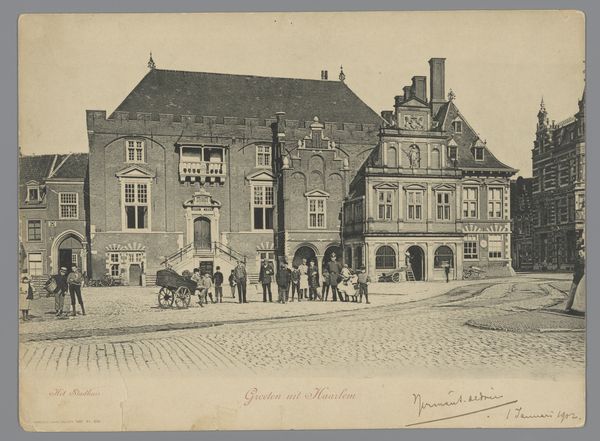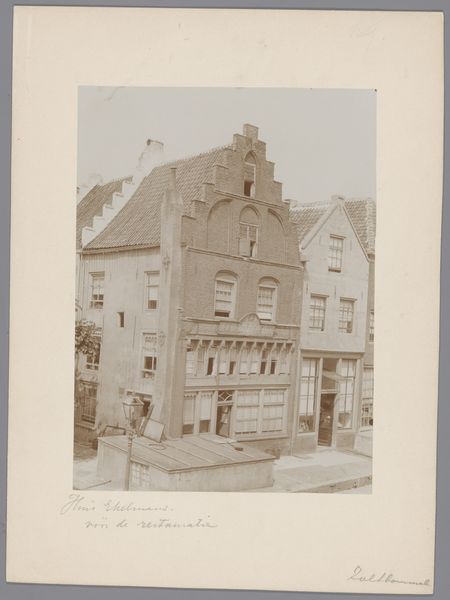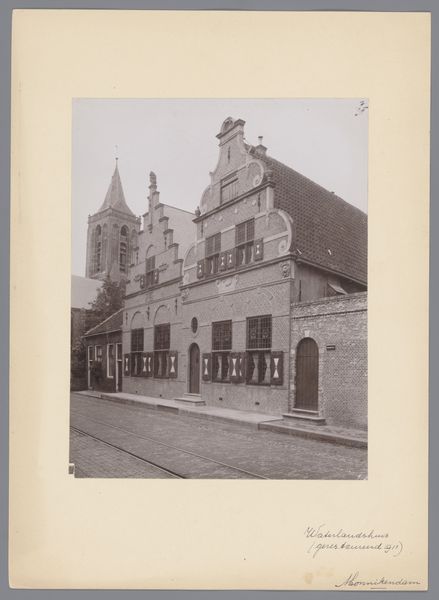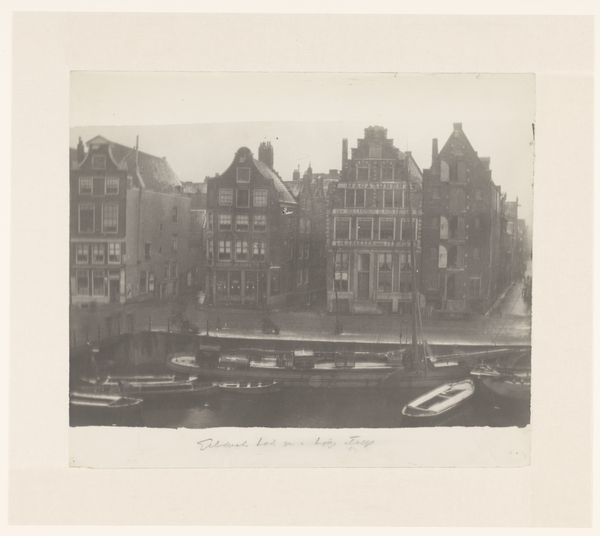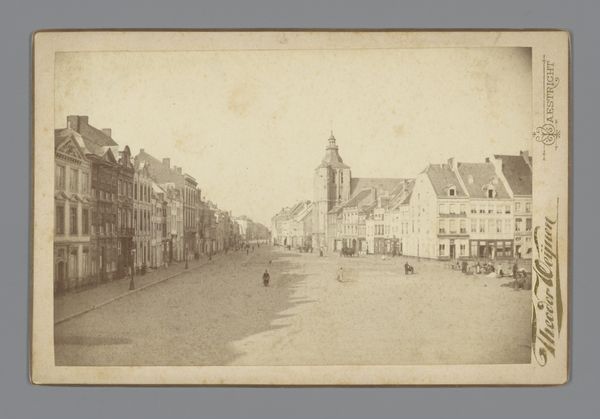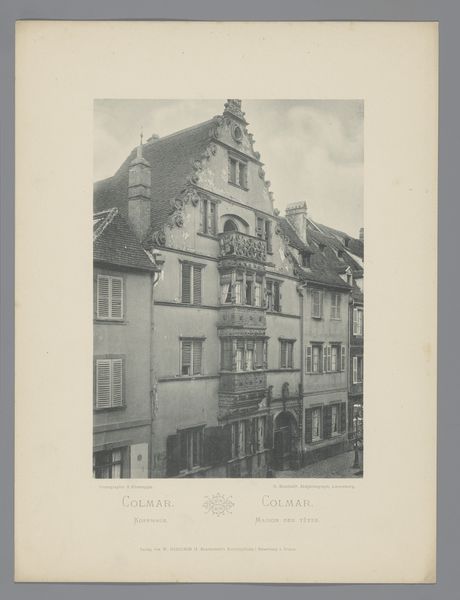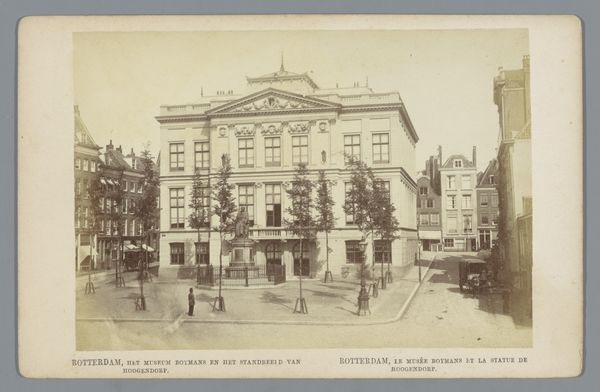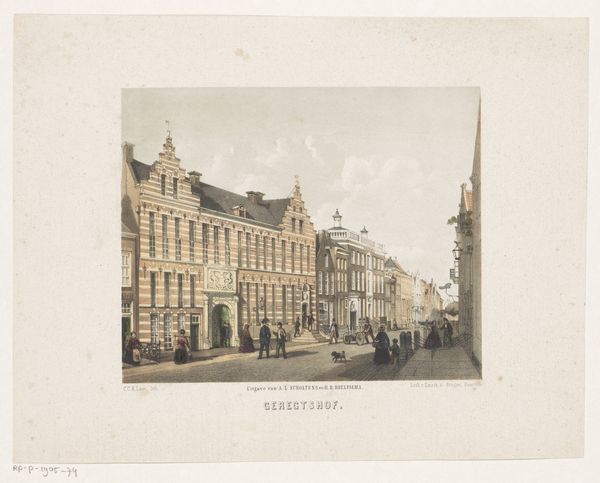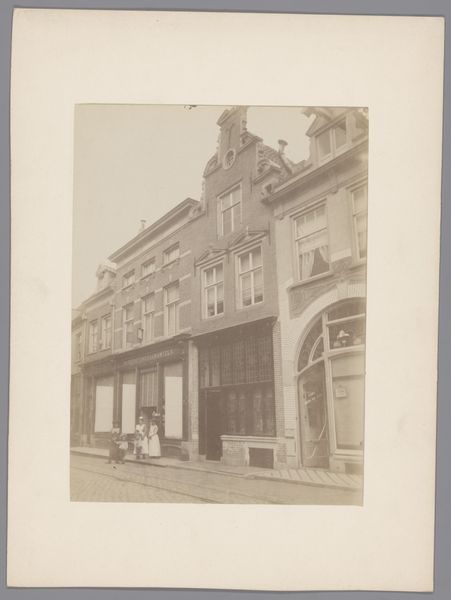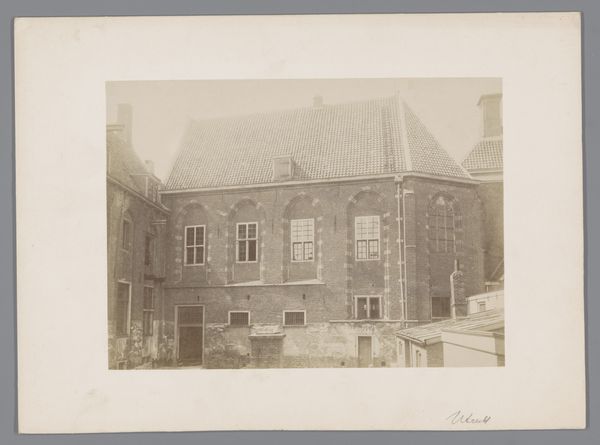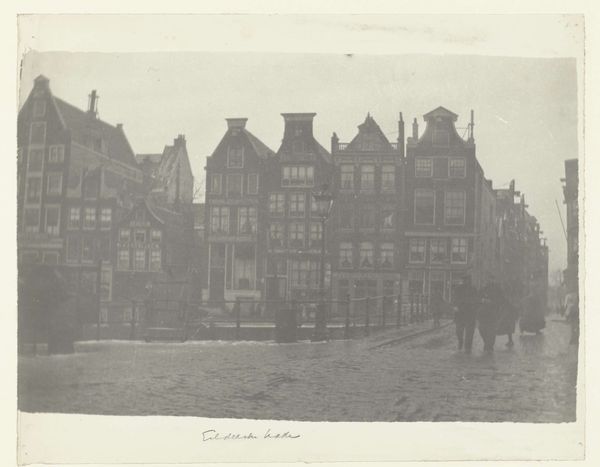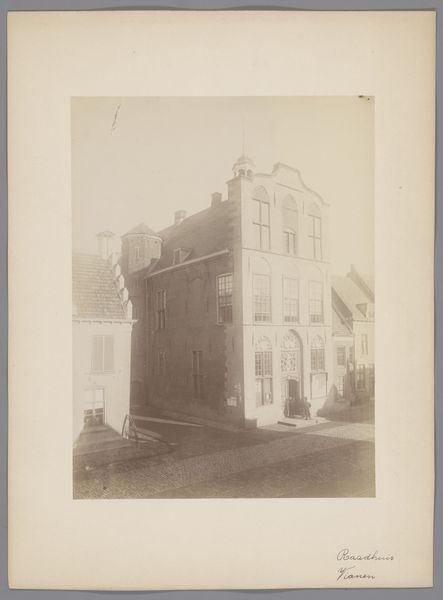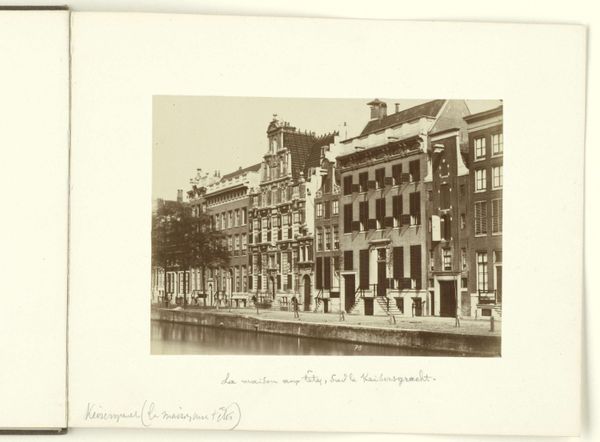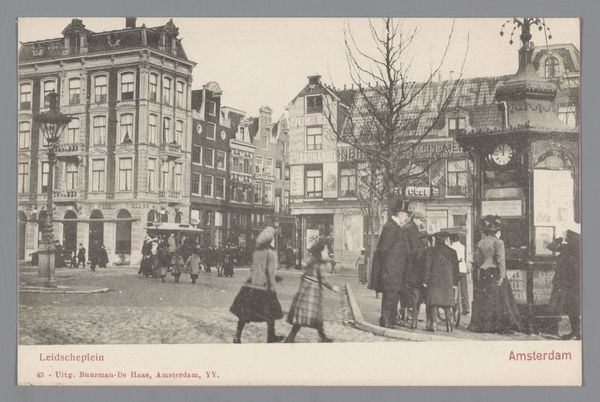
Dimensions: height 155 mm, width 217 mm
Copyright: Rijks Museum: Open Domain
Curator: What a wonderfully textured photograph! I find the tonal range in this early print quite striking. The contrast seems especially pronounced in the facade of the Ekelmans house. Editor: The photo is titled “Gezicht op huis Ekelmans te Zaltbommel,” which translates to “View of the Ekelmans House in Zaltbommel." Though the photographer remains anonymous, it dates roughly between 1890 and 1920. The materiality speaks to me: the image as artifact, capturing a moment in the urban landscape. How might this house and its surroundings reflect on socio-economic patterns of the time? Curator: Precisely! I’m drawn to the repetitive use of rectangular forms. Note the windows, the street pavers, the way even the water pump housing is composed of distinct squares. The photographer seems deeply attuned to this visual cadence. Editor: And I note that, even though it's ostensibly a study of architectural forms, the details invite us to reflect on class and labour. Carts suggesting a vibrant street market and hints of infrastructure visible point towards underlying social relations, suggesting a certain power dynamic. Curator: Absolutely. Also note how the textures shift depending on how light falls on the structures; brick and mortar become highly plastic, taking on an almost painterly quality, whilst some are dark and remain opaque. Editor: The unadorned nature is really compelling; no artistic flourish obscures the socio-political and economic realities embedded within the built environment. The geometry does offer visual respite though, in terms of architectural structures in its bare functionality. Curator: In a way, it highlights the dignity of the place, in its simple geometries. Perhaps the formal qualities serve as an enduring monument to the structures. Editor: It does seem that the architectural forms presented here embody not just aesthetics, but the material reality and living conditions of the inhabitants of the town during that era. Thanks for offering this fresh way of observing!
Comments
No comments
Be the first to comment and join the conversation on the ultimate creative platform.
